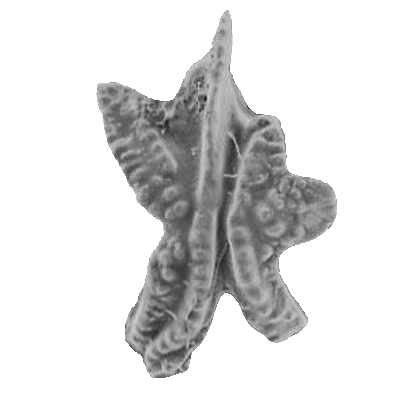| Introduction |
| Conodont elements are phosphatic tooth-like structures whose affinity and function is now believed to be part of the feeding apparatus of an extinct early vertebrate. Early ideas concluded that the conodontophorid was a soft bodied, bilaterally symmetrical nektonic organism, although there is still much debate concerning possible benthic, nektonic or combined mode of life. Conodont elements are composed of calcium carbonate fluorapatite with additional organic matter. They are found in marine deposits, commonly in black shales associated with graptolites, radiolarians, fish remains, brachiopods, cephalopods, trilobites and palaeocopid ostracods. |
 |
| History of Study |
| The name "conodont" was coined by C.H. Pander (a Russian) in 1856, who worked on Silurian fish fossils of Eastern Europe. Ulrich and Bassler (1926) described many new species from North America and were the first to recognise their biostratigraphic usefulness. In 1934 Schmidt and Scott discovered groups of individual elements preserved together on the same bedding plain. This importantly led to the theory that the individual elements were in life held in pairs (termed an apparatus) often likened to mouth parts. From the 1960's onwards conodonts have developed into one of the most important biostratigraphic tools available in Palaeozoic and Triassic rocks. |
 |
| Range |
| The very earliest conodonts are known from rocks of probable Precambrian age in Siberia, they are found more commonly in Cambrian deposits, diversity increased in the Ordovician and again during the Devonian. The conodont-bearing organism clearly survived the Permo-Triassic boundary extinctions but became extinct during the late Triassic. It has been noted that the extinction of the conodonts coincides with the diversification of dinoflagellates and first appearance of calcareous nannofosils. The most primitive conodonts are single cones, which dominate early Ordovician assemblages and reach a peak in the Arenigian (late Early Ordovician). The first platform type conodonts occur around this time as well. Conodont diversity and abundance declined in the Silurian. During the early and mid Devonian diversity gradually increased, reaching an acme in the late Devonian. In the early Carboniferous conodonts remained abundant and widespread but diversity decreased during the late Carboniferous. In the Permian the conodonts almost became extinct, however, they made a recovery in the early to middle Triassic only to disappear in the late Triassic. |
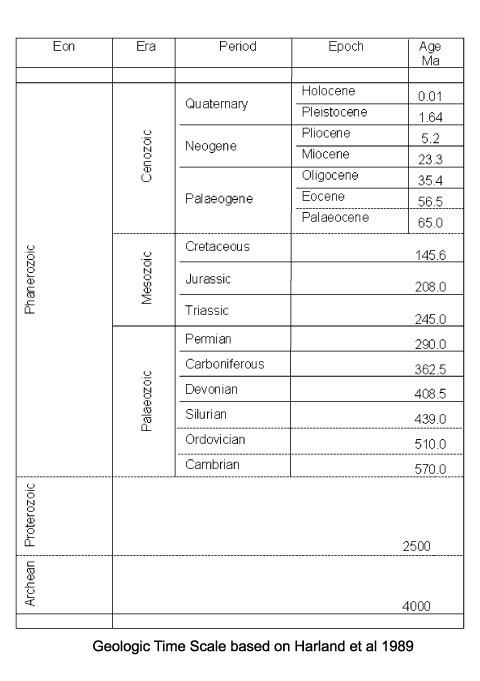 |
 |
| Classification |
Conodonts have been assigned to their own Phylum, Conodonta, divided into two Orders based on chemical and ultrastructure differences. Eleven superfamilies have been recognised by reconstructing associations of individual elments into apparatuses; and morphological and element compositonal differences further divide these into forty seven families. One hundred and eighty genera have been recognised. It must be remembered that any classification of conodonts is an un-natural one, as it is based on morphology only. Morphologically, four main groups of conodonts can be distinguished.
- Simple cones: formed by a single tooth, or denticle.
- Blade-type: elongate, laterally compressed units formed by a row of denticles which are fused except at their tips.
- Bar-type: thin bars with or without a bent shaft which is commonly branched.
- Platform: it is thought these forms evolved from bar and blade-type conodonts by the developement of broad flanges into plates.
|
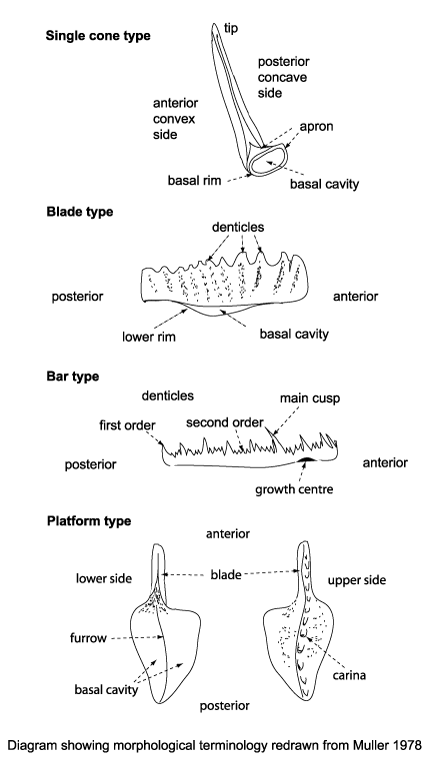 |
 |
| Applications |
| The fact that conodonts are relatively common in rocks of Palaeozoic age, a period when other microfossil groups are either not present or scarce, has made them extremely useful stratigraphic tools. Together with acritarchs, chitinozoa and spores, conodonts are the primary microfossils available to palaeontologists working on Ordovician to Permo-Triassic strata. |
 |
| Biology |
| Isolated conodonts are widespread and abundant. Untill the nineteen eighties their biological affinities were still not known. Two enlightening fossil finds provided a few clues to the affinity of conodonts. The first, a chordate animal with conodonts scattered within what is interpreted as its gut from the fish bearing Namurian (Carboniferous)
Bear Gulch limestone
of Montana. The second, from the famous Cambrian
Burgess Shale
of British Columbia, is a flattened worm-like animal 60mm long with a distinct head bearing a U-shaped structure interpreted as a lophophore (a circular or horseshoe shaped fleshy ridge surrounding the mouth, bearing tentacles found in Bryozoans and Brachiopods). At the base of each of the 20-25 tentacles is a compressed cone closely resembling some contemporaneous conodonts. However, the discovery of a Carboniferous fossil near Edinburgh (and subsequent finds in South Africa) has finaly solved the mystery of what the conodont elements are. It is now believed that they are the tooth-like feeding apparatus of a hagfish-like vertebrate. The co-occurrence of conodont elements in symmetrical pairs has allowed certain inferences to be made: The host animal probably exhibited bilateral symmetry. Several pairs of one sort can be associated with one or more pairs of another sort. The shape and arrangement of conodont elements in the apparatuses suggest that they were tooth-like feeding tools. The use of scanning electron microscopy has revealed signs of wear on conodont elements and it is thought that the host organism probably produced only one set in its life time. |
 |
| Life Cycle |
| Clearly very little can be stated about possible life cycles since the host organism of conodonts (conodontophorid) is extinct. |
 |
| Preparation Techniques |
| Since conodonts are resistant to mechanical and chemical attack preparation techniques can utilise acids such as acetic, formic, or monochloric to release the elements from their host rocks, which are commonly carbonates. Conodonts are commonly between 200 microns and 5 millimeters in size and can be sieved from finer materials and further concentrated by heavy liquid or ultrasonic techniques. |
 |
| Observation Techniques |
| The cleaned specimens can then be viewed using a reflected light microscope and manipulated and mounted in slides in the same manner as foraminifera. Conodonts can also be observed in thin sections. |
 |
| Images |
| The following images are of a representative selection of conodonts aimed at giving a general overview of the different morphotypes. Each specimen is given a generic and if possible a species name followed by the formation and the site location from which the sample was obtained. Click on an image to view a larger version. SEM images in all cases, courtesy of Leicester University |
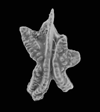
|
| Aulacognathus kuehni
Pa element
|
| Hughley Shales, Telychian Stage, Llandovery Series, Silurian
|
| Devils Dingle, nr. Buildwas, Shropshire |
|
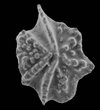
|
| Apsidognathus tuberculatus
Pa element
|
| Wych Formation, Telychian Stage, Llandovery Series, Silurian
|
| Gullet Quarry, Malvern Hills, UK |
|
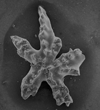
|
| Distomodus staurognathoides
Pa element
|
| Hughley Shales, Telychian Stage, Llandovery Series, Silurian
|
| Devils Dingle, nr. Buildwas, Shropshire |
|

|
| Eoplacognathus
sp. Pa element
|
| Middle Ordovician
|
| Suhkrumagi Section, Tallinn, Estonia |
|

|
| Eoplacognathus
sp. Pb element
|
| Middle Ordovician
|
| Suhkrumagi Section, Tallinn, Estonia |
|
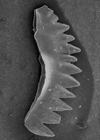
|
| Gamachignathus macroexcavatus
Pa element
|
| Upper Member, Xiushan Formation, Llandovery Series, Silurian
|
| Leijiatun Section nr. Shiqian, Guizhou Province, China |
|
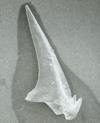
|
| Gamachignathus macroexcavatus
Pb element
|
| Upper Member, Xiushan Formation, Llandovery Series, Silurian
|
| Leijiatun Section nr. Shiqian, Guizhou Province, China |
|
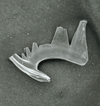
|
| Gamachignathus macroexcavatus
Sa element
|
| Upper Member, Xiushan Formation, Llandovery Series, Silurian
|
| Leijiatun Section nr. Shiqian, Guizhou Province, China |
|
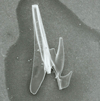
|
| Gamachignathus macroexcavatus
Sb element
|
| Upper Member, Xiushan Formation, Llandovery Series, Silurian
|
| Leijiatun Section nr. Shiqian, Guizhou Province, China |
|
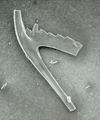
|
| Gamachignathus macroexcavatus
Sc element
|
| Upper Member, Xiushan Formation, Llandovery Series, Silurian
|
| Leijiatun Section nr. Shiqian, Guizhou Province, China |
|
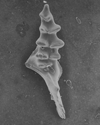
|
| Icriodella inconstans
Pa element
|
| Wych Formation, Telychian Stage, Llandovery Series, Silurian
|
| Storridge, Malvern Hills, UK |
|
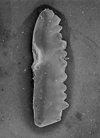
|
| Ozarkodina gulletensis
Pa element
|
| Wych Formation, Telychian Stage, Llandovery Series, Silurian
|
| Storridge, Malvern Hills, UK |
|

|
| Pseudooneotodus tricornis
|
| Wych Formation, Telychian Stage, Llandovery Series, Silurian
|
| Storridge, Malvern Hills, UK |
|
 |














